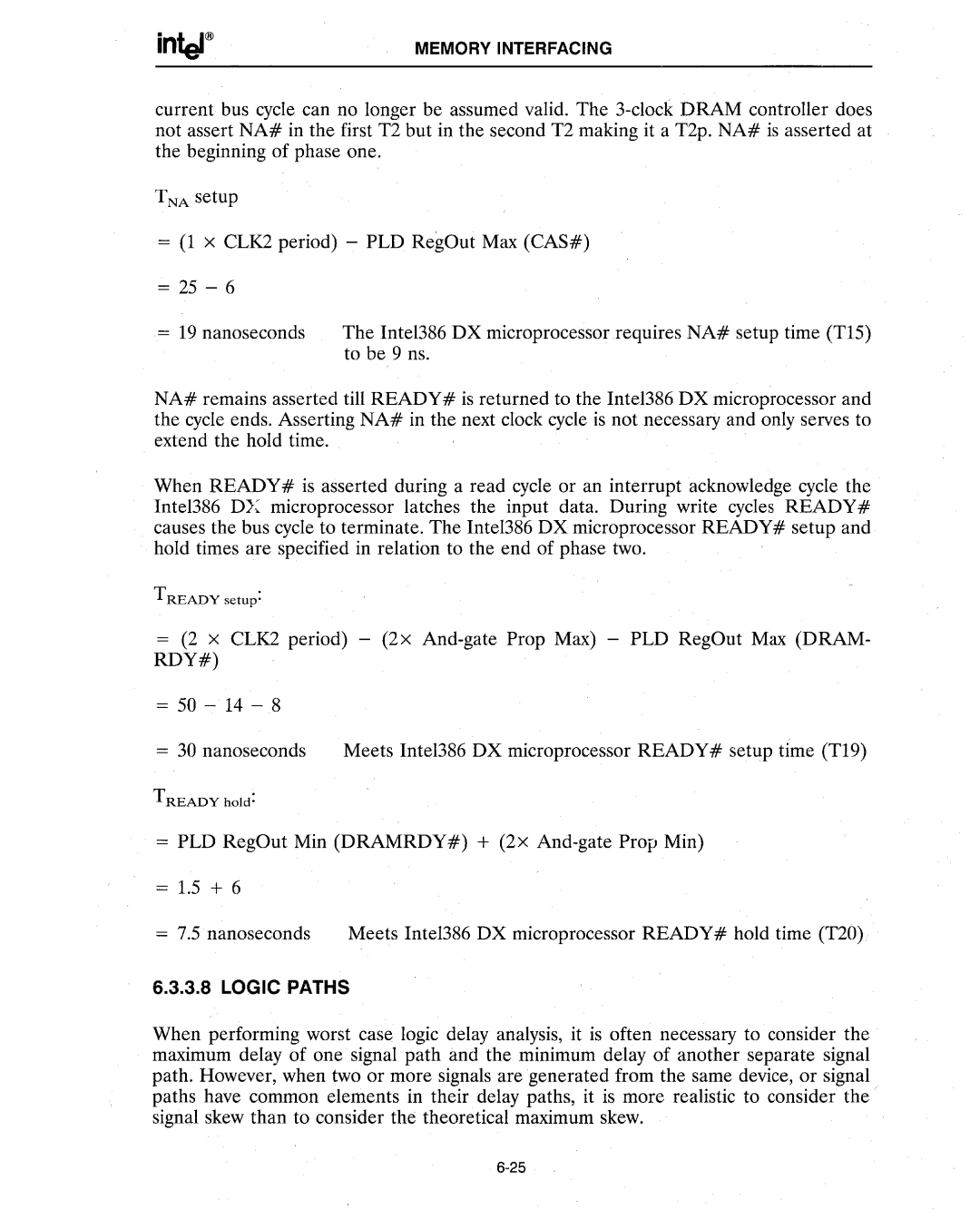
MEMORY INTERFACING
current bus cycle can no longer be assumed valid. The
TNA setup
=(1 x CLK2 period) - PLD RegOut Max (CAS#)
=25 - 6
=19 nanoseconds The Intel386 DX microprocessor requires NA# setup time (T15) to be 9 ns.
NA# remains asserted till READY# is returned to the Inte1386 DX microprocessor and the cycle ends. Asserting NA# in the next clock cycle is not necessary and only serves to extend the hold time.
When READY# is asserted during a read cycle or an interrupt acknowledge cycle the Inte1386 DX microprocessor latches the input data. During write cycles READY# causes the bus cycle to terminate. The Intel386 DX microprocessor READY# setup and hold times are specified in relation to the end of phase two.
TREADY setup:
=(2 x CLK2 period) - (2x
=50 - 14 - 8
=30 nanoseconds Meets Inte1386 DX microprocessor READY# setup tirrte (T19)
=PLD RegOut Min (DRAMRDY#) + (2x
=1.5 + 6
=7.5 nanoseconds Meets Inte1386 DX microprocessor READY# hold time (T20)
6.3.3.8 LOGIC PATHS
When performing worst case logic delay analysis, it is often necessary to consider the maximum delay of one signal path and the minimum delay of another separate signal path. However, when two or more signals are generated from the same device, or signal. paths have common elements in their delay paths, it is more realistic to consider the' signal skew than to consider the theoretical maximum skew.
